Gilmour Space, poised to send Aussie rocket into orbit, lead the way for Australian tech inventions
A plan to send a 25-metre tall rocket into orbit from a North Queensland spaceport is just the beginning for Gilmour Space, who lead our list of Australian tech and gadgetry innovations making an impact in 2023.

The countdown is on for the first ever orbital launch of a commercial rocket in Australia. Gilmour Space, based on the Gold Coast, is currently assembling its 25m-tall, three-stage Eris rocket in preparation for a scheduled launch in December from the new Bowen Orbital Spaceport in Far North Queensland.
The venture capital-backed company was founded eight years ago by Adam Gilmour, a former investment banker and self-taught rocketeer, and his brother James, with the primary goal of providing a low-cost launch service for satellites.
Designing and building a rocket that’s not only powerful enough to reach orbital velocity – the Eris must hit 7.9km per second – but also strong enough to withstand the immense loads and temperatures of the mission, and smart enough to adjust its flight path and ensure a successful orbital insertion of its payload, has been a heroic endeavour.
“In this industry you can’t just go out and hire US space engineers, or buy off-the-shelf components,” says Adam Gilmour. “We’ve had to figure out a lot of this stuff ourselves.”
Discover the 50 Australian inventions changing the world in The Weekend Australian Magazine’s Ideas Issue this Saturday.

Among the innovations developed by the Gilmours and their team of 210 is the proprietary solid fuel used in the Eris’s five main rocket motors, which was the result of six years of research and development; each of these motors produces 120 kilonewtons (about 12 tonnes) of thrust.
The liquid-fuel motor for the rocket’s third stage – the critical final push into orbit – was also designed in-house, and fabricated by 3D printing. Also designed and manufactured in-house were the motors’ flight nozzles, which use special composite materials that can withstand temperatures of over 2,500C. The Eris’s Guidance, Navigation and Control System, plus a mechanism for shutting off the motors if the rocket deviates from its intended path, were also built from scratch.
Finally, on the payload side, another radical innovation by Gilmour Space is its “G-Sat” – a modular, cubic satellite frame, 65cm across, that can host multiple payloads such as sensors, processors or other instruments. The G-Sat, developed in collaboration with Griffith University, is much larger than a regular Rubiks-Cube-sized cubesat, and offers a simple, cost-effective “plug and play” option for customers on rideshare missions.
Says James Gilmour: “It’s aimed at customers with individual or specific payloads – such as an ‘Internet of Things’ receiver or a hyperspectral camera – who want to leap ahead in rapidly proving their tech without the risks and costs of a full satellite mission … It will allow multiple organisations to gain flight experience, validate a business model, and develop their technology faster at a competitive price.”
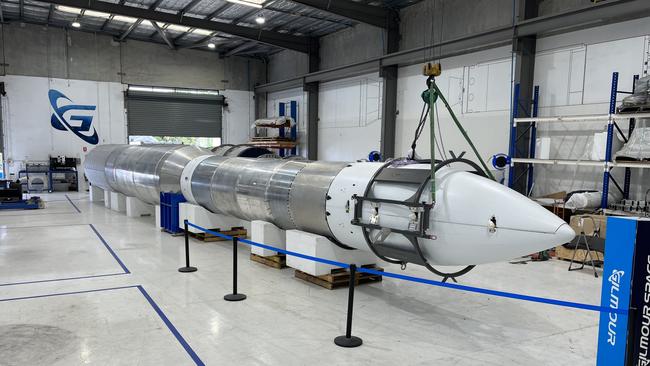
The motto of the Gilmour brothers’ firm, incidentally, is “All Orbits. All Planets” – which hints at the future ambitions of this innovative, can-do Aussie company. After grabbing market share in the fast-growing satellite launch business, Gilmour Space intends to send Australian astronauts to space, and eventually to the Moon. Even PM Anthony Albanese is impressed: on touring the firm’s facility in May, he called the venture “a great Australian success story”. – Ross Bilton
The Australian inventions changing the world
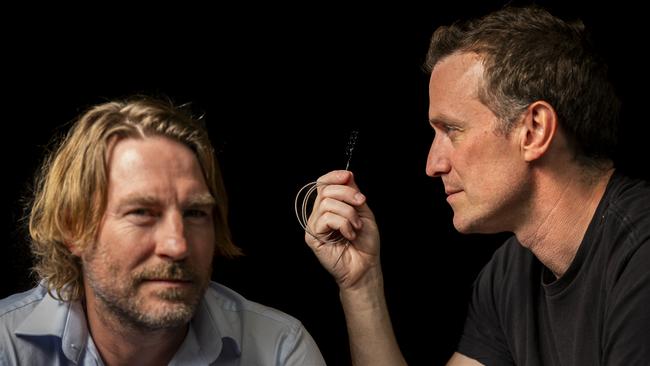
Brain powered: control a computer with your thoughts
It was once the realm of science fiction. Now, a brain-computer interface developed by this Aussie team promises to revolutionise and reshape the way we communicate.

Soldier’s best friend: why ‘Bushie’ is a great Aussie invention
Since it entered service the Bushmaster has saved hundreds of Diggers from landmines, IEDs and enemy fire – it’s one of our country’s best industrial innovations. | FULL LIST
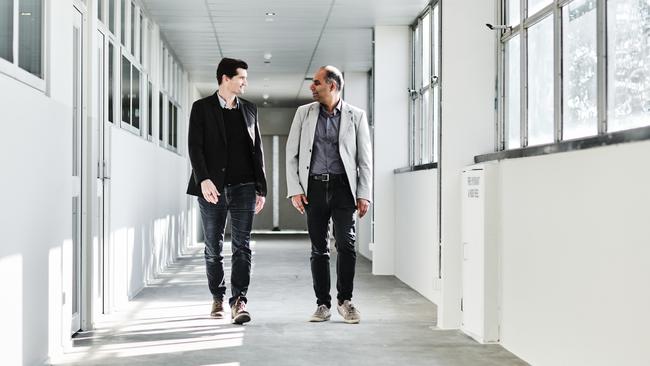
Can these engineers disrupt a billion dollar market?
Their microneedle medical patch designed to monitor the efficacy of administered drugs is among the top Australian medical breakthroughs improving human health. | FULL LIST
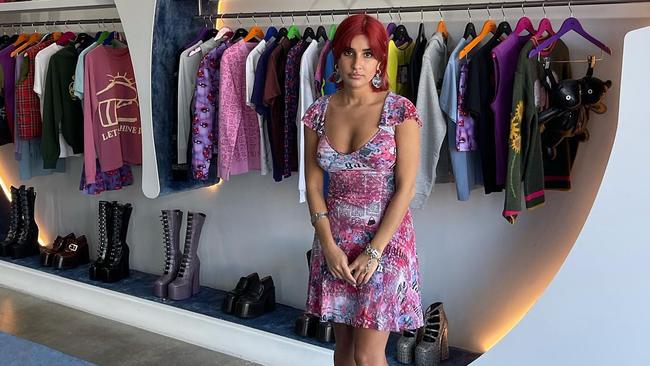
Heaven sent: two Aussie punks take over Marc Jacobs’ world
When the fashion supremo needed a breath of fresh air he turned to two Australian creatives - Ava Nirui and Elliot Shields. The pair are now among our leading fashion innovators | FULL LIST

How a Tassie seaweed farm can help save world
Methane-eating seaweed, avocados grown in a lab, and the march of the flat white towards World Domination. In the world of sustainability, food technology and dining, these Aussies are making a global impact. | FULL LIST
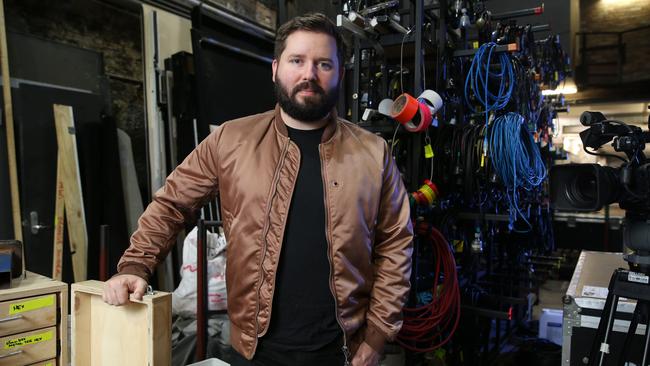
Man behind the ‘masterpiece nobody should miss’
He is the pioneer of ‘cine-theatre’ whose latest five-star production is headed to the West End and will feature a Hollywood star. Kip Williams leads our list of cultural innovators | FULL LIST

The Aussie company out to send astronauts to the moon
A plan to send a 25-metre tall rocket into orbit from a North Queensland spaceport is just the beginning for Gilmour Space, who lead our list of Australian tech and gadgetry innovations making an impact in 2023.
In Plain Sight: Aria glasses
From little things, big things grow. That’s certainly how it went for ARIA Research, a small firm in Sydney’s Haymarket that is pioneering a tech revolution for the world’s visually impaired.
ARIA (Augmented Reality in Audio) is a bionic solution for the blind or those with low vision, recreating the user’s world via sound courtesy of complicated technology housed in what appears to be a regular pair of sunglasses. In essence, the user can “see” the world through sound.
A world-first, ARIA is being developed in conjunction with the University of Technology Sydney, the University of Sydney, Blind Citizens Australia and World Access for the Blind Australia, and will represent the greatest advancement in any form of aid for the visually impaired in decades. Clinical trials are due to begin next April.
CEO and co-founder Robert Yearsley explains it best: “What ARIA does is translate the physical environment into sound. If you’ve got a glass of water in front of you and you close your eyes and tap on it, you’d know what it is and where it is from the sound. ARIA interprets the environment and the objects within it, and reproduces it synthetically without having to go with a stick and tap on everything around you. It applies very sophisticated artificial intelligence and machine vision systems to basically reconstruct the world around you, like a computer game and a three-dimensional model … and it feeds back that information and sound through stereo speakers near your ears. As you move through space, all this stuff continually changes and updates.”

The ARIA device is equipped with a camera and sensors that gather information about the user’s immediate environment, and objects within that space. The system then delivers audio cues for each object. A telephone, for example, may elicit a buzzing sound; a hedge may elicit the sound of rustling leaves. ARIA’s point of difference is that it enhances the user’s sense of touch and hearing in building its sound landscape.
The team at ARIA are also working towards being able to deliver non-verbal communication – nodding, smiling and any number of expressions – to the user. The genius of ARIA is the potential life-changing benefits it will bring to the 300 million visually impaired people around the world.
“This is kind of like working in sci-fi,” Yearsley says. “You have to engineer a world from almost an alien perspective that you can’t possibly fathom and you never will. So it’s a real mind-opening, mind-bending process. It is a revolutionary step.
“It’s the first time anything like this has been attempted in the world, and it’s coming out of Australia. The impact really will be around agency and independence because so much of blind experience is limited by an inability to access the same social cues that people with sight take for granted.” – Matthew Condon
Vanadium Redox Flow Battery
You’ve probably never heard of vanadium. Discovered in 1801, it’s a silvery metal, largely used as an additive in steel. Its alloys can be found in axles, tools, armour plates and the like. But vanadium is now, rather suddenly, one of the hottest elements on the periodic table; indeed Queensland has the construction of two new vanadium mines in the pipeline. So, what’s changed? Put simply, the world has finally caught up to a groundbreaking Australian invention by pioneering UNSW professor Maria Skyllas-Kazacos. In 1985, Skyllas-Kazacos invented the vanadium redox flow battery (VRFB) approximately 30 years too soon – but now that the green energy revolution has finally arrived, it’s time for her battery to shine. VFRBs are longer-lasting than the lithium batteries found the world over, and when all costs are considered, it is also the far cheaper option. Moreover, a VFRB has the potential to store energy efficiently and at a large scale, thus solving one of the greatest green energy conundrums.

Today you can find the world’s largest VFRBs in China and the US, while Australia’s first commercial VFRB has been built in South Australia just outside Port Pirie; the Spencer Energy Project is due to come online later this month with the capacity to hold 10 gigawatts of dispatchable solar power each year. – Jessica Clement
Linktree
Link in bio? it’s probably LinktreeIf you’re on Instagram, there’s every chance you’ve used it. Alongside the social media revolution has come the ability to distribute media through a digital universe. Landing page Linktree – founded by Melburnians Alex and Anthony Zaccaria and Nick Humphreys – is a way of linking various social media pages providing access to all kinds of websites, video and audio and in some cases take payments all via one social media account.


The Australian start-up’s lightning growth has led to partnerships with some of the world’s largest social media companies including Snap and YouTube, not to mention Only Fans, and backing from Google. Linktree hit unicorn status (meaning, a privately held start-up valued at over $US1 billion) in early 2022 and was crowned Best Place to Work in Tech by the Australian Financial Review in April – only to slash Australian jobs months later amid a shift in focus to the US and the acquisition of German rival Bento, which is aiming to change the landscape yet again by allowing users to consume content on its own platform.
– Joseph Lam
Apate
A picnic, a pepperoni pizza and a dad wanting to impress his kids on the weekend is the backstory to an invention that could, if successful, stop a lot of hard-earned cash being burned through scams. Apate, named after the Greek God of Deception, is an AI engine that has developed personalities designed to talk and respond to scammers. The whole premise of the idea goes against the grain of telecommunications companies which have long been trying to prevent and block scam calls. Apate instead seeks to answer those calls and waste so much of a scammer’s time that it no longer becomes financially feasible for the trade to continue. The AI personalities all vary in age, gender and communications style. Some present as anxious while others are angry, including one of the most popular named Peter. Apate was founded by Dali Kaafar, the executive director of Macquarie University’s Cyber Security Hub.
– Joseph Lam

Sapia.ai
Can Artificial Intelligence replace a recruiter? The founder of Sapia.ai doesn’t believe so, but she does believe that AI can provide a more equitable experience for job applicants. The start-up, formerly known as PredictiveHire, uses AI to take applicants through the early stages of the hiring process. The technology allows them to answer questions and fill out pre-application forms, and provides an assessment of the answers to the hiring employer. The start-up picked a number of major organisations in Australia including Qantas, Starbucks and Woolworths, which have also invested. Large companies have been drawn to the platform as it always responds to applicants, which reduces the chance of losing customers who may not be hired. It can also detect when an applicant has cheated in their application by using other AI platforms. Sapia.ai was founded by Barb Hyman, formerly REA Group’s head of recruitment. – Joseph Lam

Jigspace
Perhaps there’s no greater made-it moment for a start-up than when it is introduced at one of the world’s biggest tech conferences. That was the case for Australian start-up JigSpace, founded by Zac Duff and Numa Bertron. Its augmented reality app is “a platform to explore, create and share truly interactive, 3D knowledge for anything, whether you are a teacher, salesperson, designer or engineer”. The app was featured by Apple at the Worldwide Developers Conference in California in June. JigSpace was given an early look at Apple’s new Vision Pro headset to test its product. And Apple is not the first major firm to take a liking to JigSpace’s offering; the Australian start-up has landed deals with Snap and customers including Medtronic, Panasonic and Thermo Fisher Scientific. One of its major partnerships is with Alfa Romeo, which has designed an experience that allows customers to view a Formula One car in their home garage. – Joseph Lam


Baby Boom
The baby products industry has never been short of weird and wacky innovations over the decades, from anti- thumb sucking guards (imagine the metal casing on a champagne cork clamped to the baby or toddler’s offending appendage) to a tripod-style automatic feeder that dangled a full bottle above the hungry infant.
Curiously, modern Australians are leading the way in timesaving, germ-avoiding kiddie care
inventions.
There’s the “Snotty Boss” nasal aspirator. This handheld gadget clears nasal passages for little people and takes the, well, snot out of congested and sniffly noses, rendering handkerchiefs into antiquity.
How about the Nail Snail? There are few parents in the world that haven’t baulked at the prospect of trimming their baby’s finger and toenails with traditional nail scissors or clippers. Aussie Mum, Julia Christie, had an accident cutting her own son’s nails and had an idea.


She wanted a precision trimmer that was safe, fun, and even a teaching tool. So she developed the Nail Snail, a cutting device for children from birth to five years that not only keeps nails in check but includes a nail file and cleaner. And is shaped like a happy snail.
The brainchild of Julia is now sold all over the world.
Want to eradicate the pain, tears, tantrums, misery and sheer angst out of brushing your child’s hair? Enter the Happy Hair Brush. Innovator Jen Harwood wrestled with this age-old conundrum with her daughter Rose, who had thick hair. The daily hair brushing ritual became a never-ending battle. So she designed her own brush. Bright colours. Long bristles. Unbreakable. Capable of passing through the thickest and most tangled of head mops.
Happy Hair Brush is now a multimillion-dollar business.
For those familiar with the less palatable side of parenting babies and small children – the bodily fluids, the soiled nappies, the grit and the grime – the Strucket takes the yuck out of that whole messy landscape. It took Sunshine Coast Mum Kelly Lavery to reinvent a traditional bucket and replace it with one that allows you to soak, separate and drain soiled reusable nappies, for example, without laying a finger on the residual dirty water that comes with the process.


The Strucket, a combined strainer and bucket, is designer poetry in motion. Soak your dirty items in the strainer, which itself sits in a slightly larger bucket. The waste water is then captured in the bucket, and can be emptied through the bucket’s plugged drain. It has sold in the hundreds and thousands in Australia, and also the United State and the UK.
And there’s seemingly no end to its uses. The Strucket, it seems, is also a superb vessel for cooling drinks at a barbie or picnic, catching melted ice water along the way.

Then there’s Love to Dream, another masterpiece from yet another Australian mother forced to reinvent the wheel in solving new parent problems, specifically a baby with poor sleeping patterns.
Hana-Lia Krawchuk and her partner struggled through more than 18 months of broken sleep. Their son, Elijah, slept better with his arms up, rather than swaddled by his sides. Hana-Lia, a fashion designer, went to work, and invented the Swaddle UP sleep sack for newborns. It became an instant bestseller.
Her aim was to deliver more quality sleep-time to children and parents. Love to Dream’s award-winning products now sell in more than 45 countries around the world.
– Matthew Condon
Vitruvian
The home gym market has long been popular in Australia but few have been able to effectively bridge the gap between virtual work-outs and physical equipment. That was until Vitruvian came along. The Australian-founded business, which operates out of Perth, has built a machine which can automatically adjust the resistance of cables to simulate weighted squats, dead lifts, bench presses, shoulder press and more, all from a device about the size of a boogie board. The workouts aren’t simply limited to a set weight but can be programmed to provide resistance when the cables retract, weight can increase at certain speeds and the machine can add 1kg of resistance per rep. Some fine tuning has seen the device now put out as much as 200kg of resistance, which is more than double the weight of the average man in Australia. Vitruvian was founded in 2018 by a former high-frequency trader with a degree in physics, Jon Gregory.
– Joseph Lam

espresso Displays
There are Australian software success stories aplenty – think Atlassian or Canva – but how many Australian firms are tackling hardware and having the same impact? Not many. “Doing hardware is hard,” says the co-founder of espresso Displays Will Scuderi. “That’s probably why there are so few Australian or global tech hardware brands out there.” The brand has ponied up to go head to head with some of the biggest brands in the world – think Apple or Dell or Lenovo – with its high quality portable extra screen for your laptop or tablet. It’s the kind of obvious why-didn’t-I-think-of-that, where-have-you-been-all-my-life gadget that has been enthusiastically embraced by consumers around the world. “Display-related products haven’t changed in years, and no one was looking at how changes in industries and workflows should affect our input and output devices. We saw the opportunity and jumped in,” says Scuderi. The product design is simple, intuitive and it’s compatible with any device or software. It can come as a touchscreen, or not, with a stand, or a case, and in a variety of sizes. The vast majority of espresso’s customer base is global – the US is its largest market by far – and in the past month, the team has secured distribution agreements with partners in the UK, Germany, and Israel.
– Jessica Clement

HiSmile
Gold Coasters Nik Mirkovic and Alex Tomic have built a global teeth whitening empire. Their products – teeth whitening kits, strips, mouthwash and now (banana and grape flavoured-) toothpastes – are stocked in Walmart, Harrod’s & the French department store giant Galeries Lafayette. Not bad for a pair of 20-somethings who started with $20,000 back in 2014. But what’s the secret of their success?
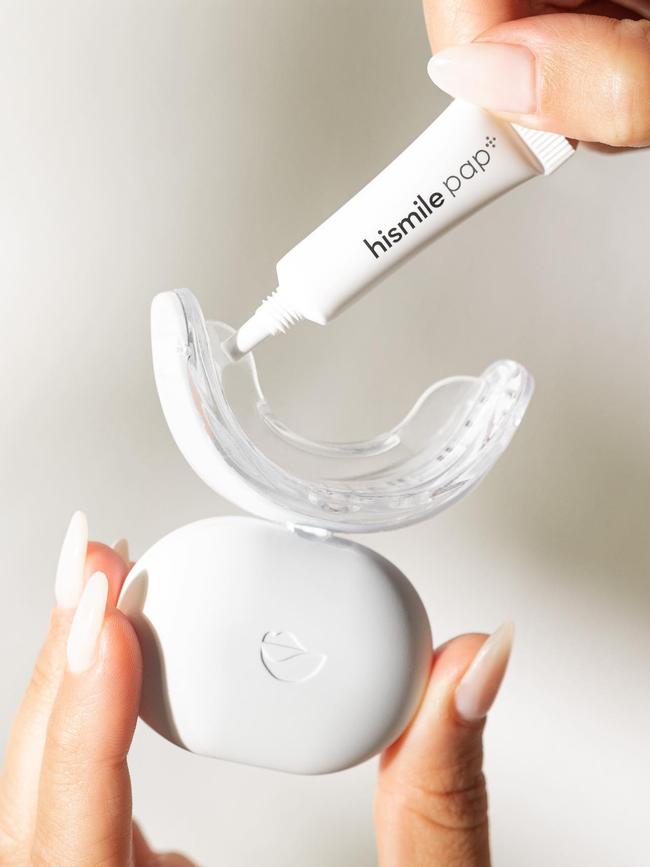
Is it the innovative product, or its even more innovative marketing model? Early in their business journey, the pair decided to aggressively target celebrities and influencers on platforms such as Instagram. Lo and behold, some of the biggest celebrities on Earth bought in – think Conor McGregor or Kylie Jenner – enthusiastically posted vision of themselves using a HiSmile device that looks something like an ultraviolet glowing mouthguard. HiSmile products give customers whiter teeth without using peroxide product (which can cause damage to enamel) and it offers consumers an alternative to expensive and uncomfortable trips to the dentist for whitening procedures.
– Jessica Clement


To join the conversation, please log in. Don't have an account? Register
Join the conversation, you are commenting as Logout